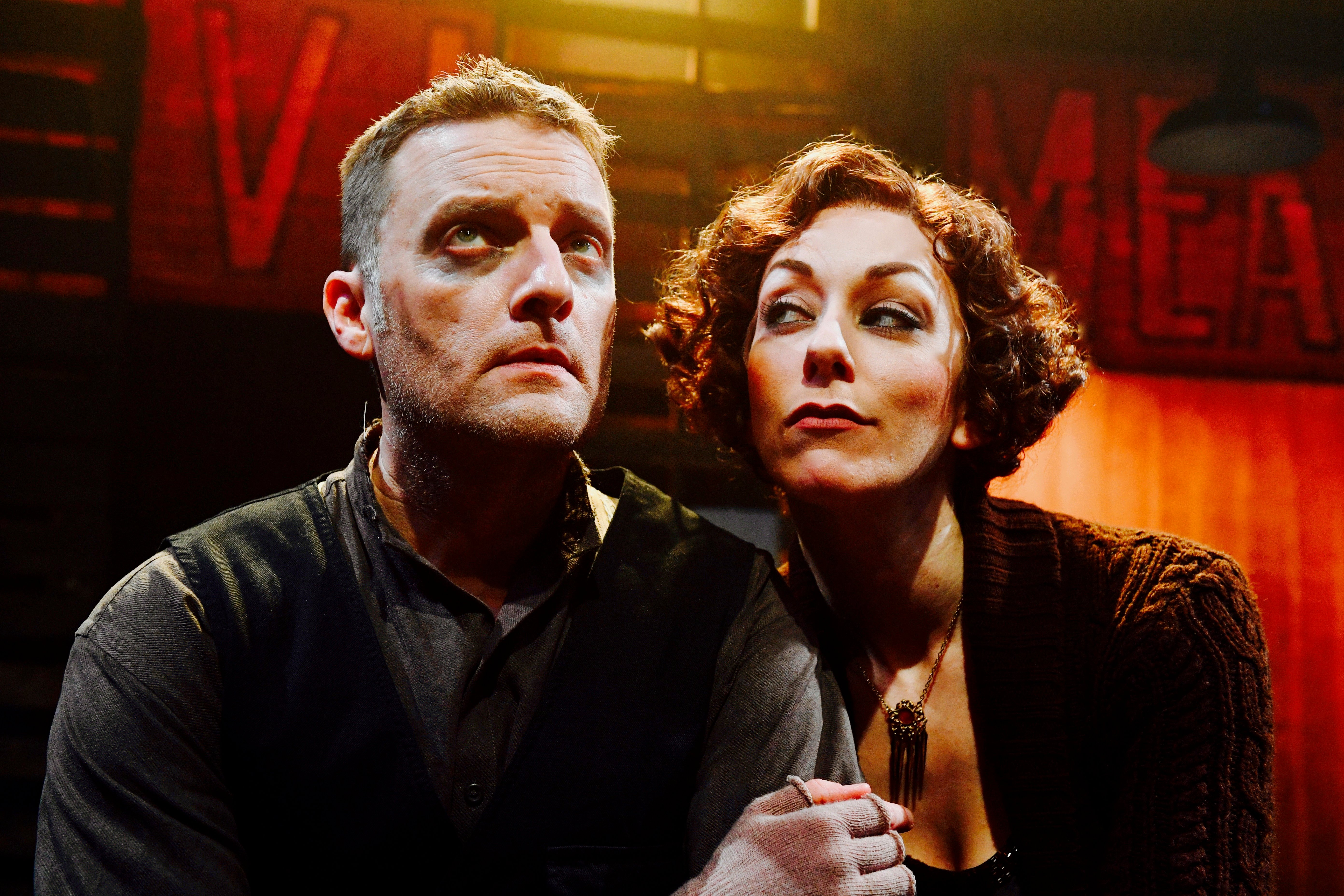Stephen Sondheim’s famous “Sweeney Todd” lit up the Bay Area in a nail-biting rendition at the San Jose Stage Company. The production itself is popular amongst audiences of all demographics for its innovative music and uniquely dark premise, and the Stage Company doesn’t disappoint.
The cast, strong in both acting and singing chops, placed a brooding shadow over the already-dark musical. The demon barber of Fleet Street himself, Sweeney Todd (a tormented Noel Anthony), teams up with the devious Mrs. Lovett (prolific Bay Area actress Allison F. Rich) to gain retribution for the sexual assault of his wife by the evil Judge Turpin (Christopher Vettel). Keith Pinto puts forth an outstanding performance as Tobias Ragg, the innocent young boy who is flung between multiple masters before being driven insane — this scene is particularly terrifying as audiences witness his slow descent into madness. The similarly tormented Johanna (Monique Hafen), forced the audience into silence after seeing her blank, brainwashed stare, a certain loss of life and meaning that typically shakes you to the bone. If you’ve never seen “Sweeney Todd,” I won’t spoil it — but tragedy must end in plenty of death, and Sweeney himself dies the most tragic of deaths, committed in the most unexpected of ways. “Sweeney Todd” relishes its reveals and dramatic twists, which the Stage Company carries out in a devastating (yet oddly satisfying!) fashion.
Yet “Sweeney Todd” is also not without its comedic moments. Adolfo Pirelli (Ric Iverson) is the hysterical embodiment of fake elitism, fueled by his need for vengeance on Sweeney Todd. Mrs. Lovett is also delightfully charming and scrappy, pining over the grieving, depressed Sweeney while acting as his partner in crime. I started rooting for both of them right from the get-go simply because of the nature of their twisted relationship — there’s something so rewarding about seeing a relationship between antiheroes blossom.
The standout element of the Stage Company’s production design was the scenic design by Michael Palumbo. A simple set involving a small wooden crate, a large metal cage and a set of jail bars worked interchangeably between scenes — for example, the crate became a town soapbox when a character stood on it, while it transformed into a set of stairs when climbed over. In a unique collaboration with director Kenneth Kelleher, Palumbo’s usage of each object required a certain suspension of belief, but once established, became easy to follow and artistically effective. The space was transformed incredibly effectively using these elements, making a barren stage into a lively, disturbing rendition of each location in the same simple space.
Shrill scratching-on-strings effects dramatically punctuated each murder that Sweeney Todd commits, with sound design by Steve Schoenbeck. Again in a unique collaboration, Schoenbeck’s sound accompanied a non-naturalistic depiction of death when stage blood was poured into a bucket (properties design by Joanna Hobbs). The simple sound of liquid falling and hitting the bucket, in tandem with the bright red liquid itself, became a triggering marker for each death both visually and aurally. It’s often tough to balance pit orchestra music built into a show with external sound, but the Stage Company’s version of “Sweeney Todd” is built in a such a way that they slip seamlessly together in a way that is unlike any production I’ve seen.
The San Jose Stage Company production of “Sweeney Todd” was simple but uniquely innovative in its design and staging. Headlined by a talented cast (if you see any Bay Area theater, look for them!), the Stage Company revels in the intimate size of its theater, forcing the audience into listening to ever word, hearing every note — such a story is bound to create some tension, and that’s when you know a production is created correctly. Getting in people’s faces is effectively a tool for crafting a narrative, and doing so only brings the audience closer into the story. As someone involved in on-campus theater as an artist, I’ve begun to refer to “Sweeney Todd” as a fantastic example of what set design should be and how interlocking elements in a production come into play — and I’m a tough person to please.
Contact Olivia Popp at oliviapopp ‘at’ stanford.edu.
